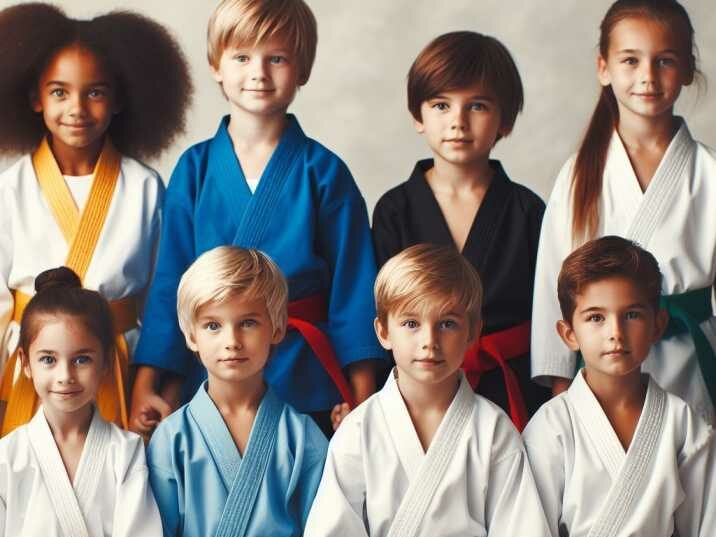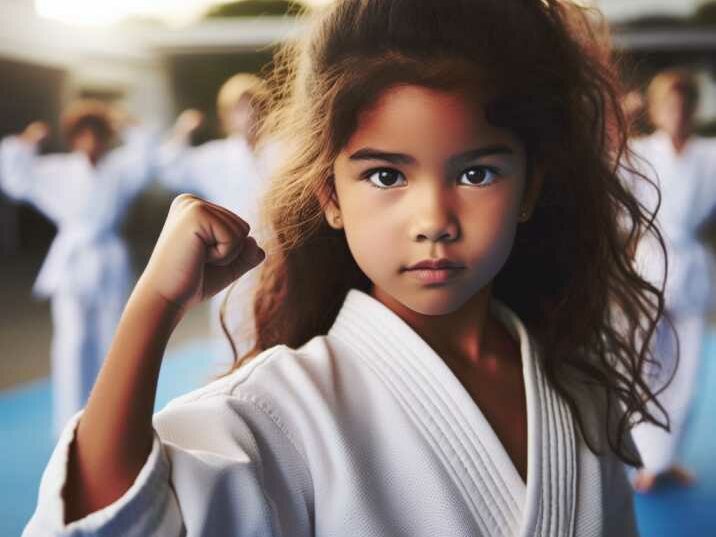Introduction
Table of Contents
Choosing the Right Martial Art
Choosing the right martial art for your child is a pivotal decision that can shape their physical, mental, and emotional development. In this comprehensive guide, we’ll delve into the factors to consider, the benefits of different martial arts, and how to make an informed choice for your child’s journey.

Choosing the Right Martial Art: A Personalized Approach
Finding the perfect martial art for your child is not a one-size-fits-all endeavor. It’s about understanding your child’s personality, interests, and goals. Let’s explore the key factors that will guide you through this decision-making process.
Factors to Consider:
- Age and Developmental Stage:
- Consider the age and developmental stage of your child. Some martial arts are better suited for younger children, emphasizing play and coordination, while others are more suitable for older kids focusing on discipline and skill mastery.
- Personal Interests:
- Take into account your child’s interests. If they are drawn to the acrobatics of capoeira or the disciplined forms of karate, aligning their passion with the martial art will keep them engaged.
- Physical Abilities:
- Assess your child’s physical abilities. Some martial arts may require more flexibility, while others emphasize strength or speed. Choosing a style that aligns with their natural abilities can boost their confidence.
- Goals and Values:
- Understand your child’s goals and your family values. Some martial arts emphasize competition, while others focus on self-discipline and personal growth. Aligning the martial art with your values ensures a harmonious experience.
The Transformative Benefits of Martial Arts for Kids
Martial arts offer a plethora of benefits for children beyond physical fitness. Let’s explore how the right martial art can positively impact your child’s life.

Physical Fitness and Coordination:
Martial arts provide a holistic approach to physical fitness, enhancing coordination, strength, and flexibility. From the kicks in taekwondo to the grappling techniques in judo, each movement contributes to overall physical well-being.
Discipline and Focus:
The structured nature of martial arts classes instills discipline and focus. Children learn to follow instructions, respect their instructors, and concentrate on the task at hand, skills that extend beyond the dojo into everyday life.
Building Confidence:
As children progress in their chosen martial art, earning belts and mastering techniques, they build confidence in their abilities. The sense of accomplishment translates into a positive self-image and a willingness to take on challenges.
Respect and Sportsmanship:
Martial arts emphasize respect for instructors, peers, and opponents. Children learn the value of sportsmanship, understanding that success is not just about winning but also about respecting others and displaying integrity.
Making the Decision: The Next Steps
Now that we’ve explored the considerations and benefits, let’s discuss the practical steps to choosing the right martial art for your child.
Visit Local Martial Arts Schools:
- Visit local schools to observe classes and speak with instructors. Get a feel for the environment and the teaching style, ensuring it aligns with your child’s needs.
Trial Classes:
- Many schools offer trial classes. Take advantage of these opportunities to allow your child to experience different martial arts and find the one they enjoy the most.
Seek Recommendations:
- Ask for recommendations from other parents or friends whose children are involved in martial arts. Personal experiences can provide valuable insights.

Conclusion: Empowering Your Child’s Journey
In conclusion, choosing the right martial art for your child is a significant investment in their physical, mental, and emotional well-being. By considering their interests, abilities, and goals, you can empower them on a transformative journey that extends beyond the training mat. Take the time to explore, observe, and engage in trial classes to make an informed decision that aligns with your child’s unique qualities.
FAQs (Frequently Asked Questions):
- Q: What age is suitable for a child to start learning martial arts?
- A: Most martial arts schools accept children as young as 4 or 5 years old.
- Q: How can I assess my child’s physical abilities for a specific martial art?
- A: Many schools offer introductory classes where instructors can assess and guide your child based on their abilities.
- Q: Are there martial arts suitable for children with special needs?
- A: Yes, many schools offer inclusive programs and adapt training to accommodate children with special needs.
- Q: Can martial arts help my child build self-confidence?
- A: Absolutely. Achieving milestones and mastering techniques in martial arts significantly boosts a child’s self-confidence.
- Q: How do I know if my child is more suited for a competitive or non-competitive martial art?
- A: Understanding your child’s goals and preferences, as well as discussing this with instructors, can help make this determination.
- Q: Is there a specific martial art that focuses more on self-defense?
- A: While many martial arts teach self-defense, disciplines like Krav Maga specifically emphasize practical self-defense techniques.
- Q: How can martial arts contribute to my child’s academic performance?
- A: The focus and discipline developed in martial arts often translate into improved concentration and academic success.
- Q: Are there cultural aspects to consider in certain martial arts?
- A: Yes, many martial arts have deep cultural roots, and learning about these aspects can be an enriching experience for children.
- Q: Should I choose a martial art based on my child’s favorite movie or TV show?
- A: While inspiration can come from various sources, it’s essential to consider the practical aspects and alignment with your child’s interests and abilities.
- Q: How often should my child attend martial arts classes?
- A: The frequency of classes depends on the martial art and the child’s age. Many schools offer classes multiple times a week for consistent progress.

